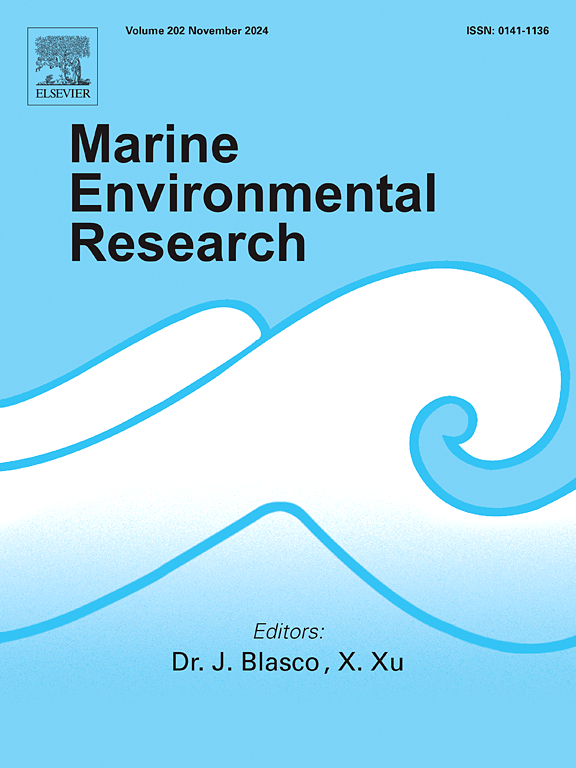Spatial and temporal patterns in pelagic fish egg assemblages in spring and late autumn–winter in eastern Beibu Gulf
IF 3
3区 环境科学与生态学
Q2 ENVIRONMENTAL SCIENCES
引用次数: 0
Abstract
Semi-enclosed gulfs play important roles in global marine ecosystems, but they are vulnerable to anthropogenic disturbance and the effects of climate change. Beibu Gulf, the largest semi-enclosed gulf in China, is characterized by complex oceanographical conditions and high fish diversity, and it is an important fishing and spawning ground for many fish species. However, little is known about where these fishes spawn. We examine spatial and temporal distributions of fish eggs and their assemblages in the eastern Beibu Gulf in spring and late autumn–winter of 2020. A total of 75 taxa of fish eggs were identified, belonging to 9 orders, 33 families and 52 genera. In spring, the taxa are dominated by species in the families Clupeidae, Leiognathidae, and Carangidae (43.62%, 19.84%, and 12.51% of the total catch, respectively); from late autumn–winter, dominant families are the Engraulidae (27.52%), Sparidae (15.08%), and Clupeidae (13.32%). Five egg assemblages are recognized in spring, and four in late autumn–winter. Of available environmental variables, the sea surface temperature anomaly, water depth, and chlorophyll-a concentrations most affect fish egg assemblages. These results provide information to inform protection of fish spawning grounds and to aid fisheries management in Beibu Gulf.
求助全文
约1分钟内获得全文
求助全文
来源期刊

Marine environmental research
环境科学-毒理学
CiteScore
5.90
自引率
3.00%
发文量
217
审稿时长
46 days
期刊介绍:
Marine Environmental Research publishes original research papers on chemical, physical, and biological interactions in the oceans and coastal waters. The journal serves as a forum for new information on biology, chemistry, and toxicology and syntheses that advance understanding of marine environmental processes.
Submission of multidisciplinary studies is encouraged. Studies that utilize experimental approaches to clarify the roles of anthropogenic and natural causes of changes in marine ecosystems are especially welcome, as are those studies that represent new developments of a theoretical or conceptual aspect of marine science. All papers published in this journal are reviewed by qualified peers prior to acceptance and publication. Examples of topics considered to be appropriate for the journal include, but are not limited to, the following:
– The extent, persistence, and consequences of change and the recovery from such change in natural marine systems
– The biochemical, physiological, and ecological consequences of contaminants to marine organisms and ecosystems
– The biogeochemistry of naturally occurring and anthropogenic substances
– Models that describe and predict the above processes
– Monitoring studies, to the extent that their results provide new information on functional processes
– Methodological papers describing improved quantitative techniques for the marine sciences.
 求助内容:
求助内容: 应助结果提醒方式:
应助结果提醒方式:


